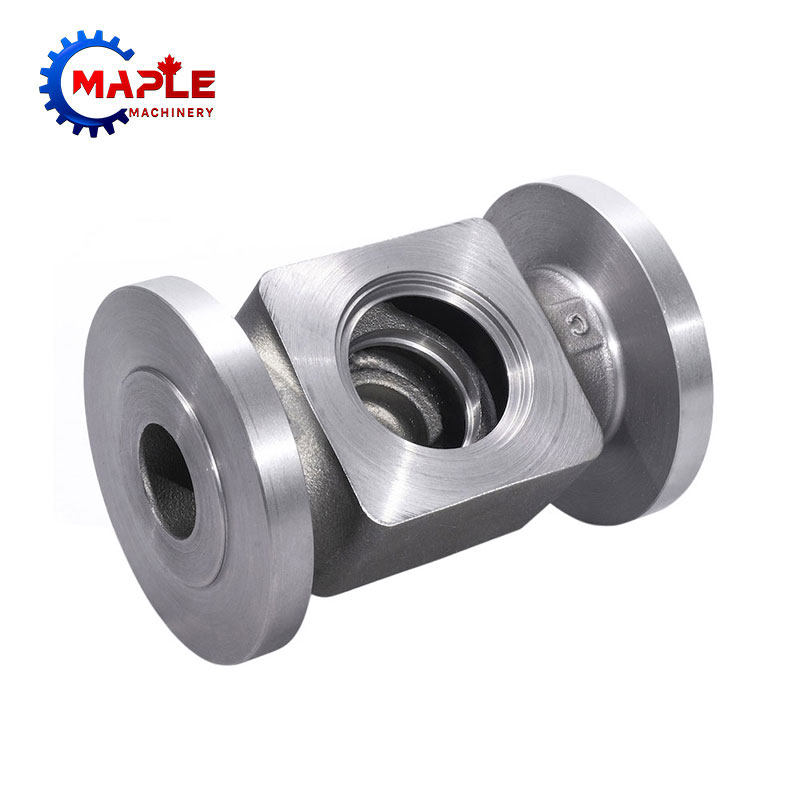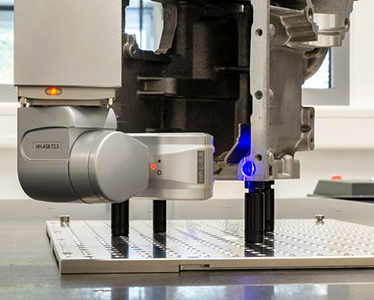Call Us
+86-19858305627
Email Us
sales@maple-machinery.com
Reasons for Oxygen Cracks in Steel Castings
2022-03-30
Reasons for Oxygen Cracks in Steel Castings
The important reason for the crack defects of oxygen cutting caused by large steel castings is: oxygen cutting is to use a flame that is mixed with carbon dioxide and acetylene gas to heat up the fiber laser cutting place to a certain temperature, and then use the co2 sprayed from the hole wall of the cutting torch to cut the hole. The fiber laser cutting place causes obvious ignition, and the chemical liquid caused by the ignition will be scraped off by the carbon dioxide flow, which will continue to cause slits until the entire process of fiber laser cutting is carried out.
The cross-section of large steel castings undergoes fiber laser cutting. After the ignition point is cooled, the rate exceeds the smaller cooling rate for the conversion of cold austenite into martensite until all of them are converted into martensite, which will cause swelling and the product When the carbon content is high, the oxy-cut carbon will diffuse to the outside of the field from the management position of the cross-section of the oxy-cut, which will cause a surge outside the field. After the oxygen cutting is completed, the change of the low-temperature austenite into martensite during the cooling will lead to the change of the stress field from the residual stress field. Radial tensile stress, the management part is the circumferential compressive stress field. If the shaft diameter tensile stress exceeds the tensile strength of the metal product, it will lead to shaft diameter cracks and cause oxygen cutting cracks. The management part is the shaft diameter compressive stress field, which is not easy to cause shaft diameter cracks.
Large steel castings and alloy steels with too high carbon content will easily lead to oxygen cutting cracks due to their good workability. When the cross section of oxygen cutting is air-cooled, the ultra-low temperature austenite is transformed into martensite and the thickness increases, which is easy to The thermal stress that leads to a change in the stress field will continue to cause them to expand due to oxygen-cut cracks. When the oxygen cutting is ignited and spread downward, it can ensure the whole process of oxygen cutting, and it will also cause the change of thermal stress to develop downward, and it will continue to cause the oxygen cutting cracks to expand downward to a certain level, allowing the cracks to penetrate into the iron castings. The larger the rubber inlet, the longer the oxygen cutting time, the larger the level of ignition and the downward spread, and the heavier the oxygen cutting crack level, the risk source of expanding oxygen cutting cracks and invading the iron castings.

The important reason for the crack defects of oxygen cutting caused by large steel castings is: oxygen cutting is to use a flame that is mixed with carbon dioxide and acetylene gas to heat up the fiber laser cutting place to a certain temperature, and then use the co2 sprayed from the hole wall of the cutting torch to cut the hole. The fiber laser cutting place causes obvious ignition, and the chemical liquid caused by the ignition will be scraped off by the carbon dioxide flow, which will continue to cause slits until the entire process of fiber laser cutting is carried out.
The cross-section of large steel castings undergoes fiber laser cutting. After the ignition point is cooled, the rate exceeds the smaller cooling rate for the conversion of cold austenite into martensite until all of them are converted into martensite, which will cause swelling and the product When the carbon content is high, the oxy-cut carbon will diffuse to the outside of the field from the management position of the cross-section of the oxy-cut, which will cause a surge outside the field. After the oxygen cutting is completed, the change of the low-temperature austenite into martensite during the cooling will lead to the change of the stress field from the residual stress field. Radial tensile stress, the management part is the circumferential compressive stress field. If the shaft diameter tensile stress exceeds the tensile strength of the metal product, it will lead to shaft diameter cracks and cause oxygen cutting cracks. The management part is the shaft diameter compressive stress field, which is not easy to cause shaft diameter cracks.
Large steel castings and alloy steels with too high carbon content will easily lead to oxygen cutting cracks due to their good workability. When the cross section of oxygen cutting is air-cooled, the ultra-low temperature austenite is transformed into martensite and the thickness increases, which is easy to The thermal stress that leads to a change in the stress field will continue to cause them to expand due to oxygen-cut cracks. When the oxygen cutting is ignited and spread downward, it can ensure the whole process of oxygen cutting, and it will also cause the change of thermal stress to develop downward, and it will continue to cause the oxygen cutting cracks to expand downward to a certain level, allowing the cracks to penetrate into the iron castings. The larger the rubber inlet, the longer the oxygen cutting time, the larger the level of ignition and the downward spread, and the heavier the oxygen cutting crack level, the risk source of expanding oxygen cutting cracks and invading the iron castings.

Previous:Advantages of Steel Castings
We use cookies to offer you a better browsing experience, analyze site traffic and personalize content. By using this site, you agree to our use of cookies.
Privacy Policy























































